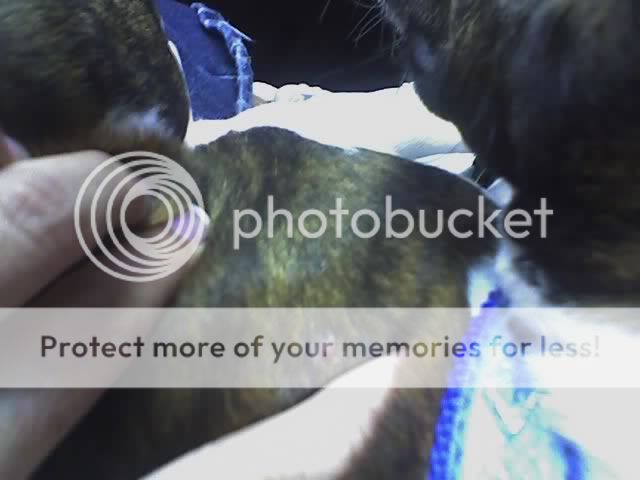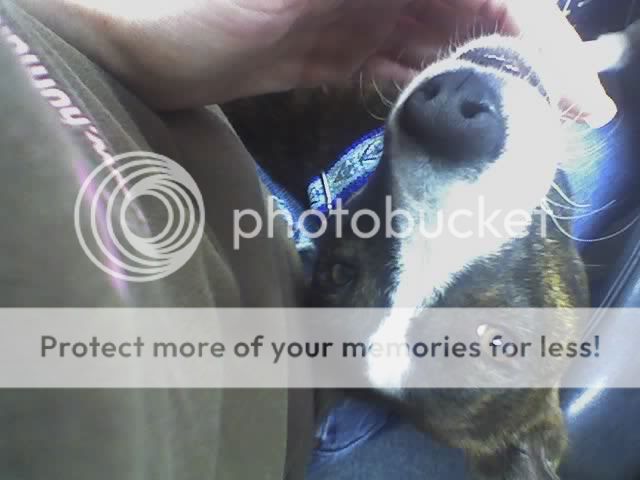Nope, any dog any age can be trained and desensitized.
In fact it hit me, Kathy Diamond Davis has had dogs with seizures. You can email her, tell her I sent you, if you need help. Kathy is great with sensitive dogs.
KDiamondD@aol.com
Noise Phobia (web page makes half the script black unless you highlight), can use same method for all loud noises including the motor cycle. I'd actually go out and TAPE it, start playing really low.
http://companionanimalsolutions.com/blogs/tips-for-dog-owners-noise-phobia/
http://www.peteducation.com/article.cfm?c=1+1551&aid=2545
http://dogbuilders.com/articles/2009/01/noise-phobias.html
Counterconditioning: Using counterconditioning, the animal is taught to display an acceptable behavior rather than an unacceptable one as a response to a certain stimulus. In this way, a negative stimulus can become associated with a positive event. For instance, the only time the pet gets his most favorite treat, game, or toy, is just prior to and during a thunderstorm. Dogs who enjoy traveling may be taken for a car ride, or cats who love catnip, may be given their favorite catnip mouse. (Dogs who enjoy swimming will need to wait inside until the storm is over!) After a time, the pet will start associating an oncoming storm with getting to have his favorite thing.
Desensitization: Using desensitization, the animal's response is decreased while he is exposed to increasing levels of the fear-producing stimulus. For noise phobias, the animal is taught to be calm when the noise level is low, and then the noise level is gradually increased. This process is generally more successful in dogs than cats. To desensitize a pet to thunderstorms:
1. Obtain a commercial tape or CD of a storm, or tape record one yourself (commercial products generally work better). Play the recording at normal volume to determine if it will induce the fear response. If it does, continue with the desensitization; if not, you will need to obtain a different recording. For some animals, a recording alone may not work, since there may be a combination of occurrences that provokes fear, e.g.; thunder plus lightning or changes in barometric pressure. For these animals, darkening the room and adding strobe lights may more closely mimic the storm, and may need to be included in the desensitization process.
2. Play the recording at a volume low enough that the pet is aware of the sound, but it does not induce a fear response. For instance, the ears may be ****ed towards the source of the sound, but you still have the pet's attention. In some instances, that may mean the pet needs to be in a different room from where the recording is playing. While the recording is playing at the low level, engage the pet in an activity in which you give the commands, such as obedience training or performing tricks. Give food or other rewards during the activity when the pet accomplishes what he is supposed to. If the animal shows signs of fear, stop and try again the next day, playing the recording at an even lower level. It is important that the pet not be rewarded while he is fearful or anxious. Sessions should last about 20 minutes.
3. If the animal does not respond fearfully, during the next session, increase the volume slightly. Again, involve the pet in an activity and reward it for obeying commands. Continue increasing the volume gradually for each session. If the pet starts to show fear, decrease the volume. Repeat the sessions in various rooms of the house and with various family members present.
4. When the pet does not show fear when the recording is played at a loud volume, you may want to try playing the recording for a short time while you are absent. Gradually increase the time you are gone while the recording is playing.
5. When the pet appears to have lost his fear, the sessions can be reduced to one per week. In most instances, these sessions will need to be repeated weekly for the life of the pet.
6. During an actual storm, use the same activities and rewards you used in the training sessions.
To increase the chances of successful desensitization, the training process should take place during a time of the year when the actual noise will not be encountered: if the pet is afraid of thunder or fireworks, try desensitization during the winter; if afraid of gunshots, the training should take place outside of the hunting season. In most instances, it is best to discontinue any behavior-modifying medications during the desensitization process. Consult with your veterinarian before discontinuing any medications.

